By Rita Hintlian
“People don’t take trips, trips take people.”
—John Steinbeck
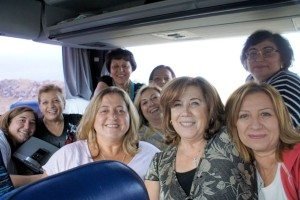
Months ago, I had decided that I would go on the Javakhk tour organized by the Armenian Relief Society (ARS). The Central Executive Board’s (CEB) schedule for the ARS 71st International Convention in October 2015 had one tour before the convention to Javakhk and another tour after the convention to Artsakh (Nagorno-Karabagh). I had never been to Javakhk. Attending Javakhk benefits, photographing, writing video voiceovers and articles about the people there was not enough. I wanted to see and feel the place I had learned about, places people found hard to pronounce—Akhalkalak and Akhaltskha—during my youth. Aside from all the official videos and reports, one of my past ARS chapter executive members had told me about her personal experience, as she and her late husband had participated on an ARS tour of Javakhk, which was part of a tour of Western Armenia. And as luck would have it, she came on this tour, too.
There were a lot of familiar faces during the three-day tour, and many new ones that I got acquainted to by the end of my trip to Armenia. Haigoush Kohler, who had chaired the ARS of Western USA Javakhk Fund Committee for 14 years, was also on the tour, along with current and former members of the ARS of Western USA Regional Executive.
In Moscow, where we switched planes to Yerevan, we met ARS members from the East Coast. We arrived in Yerevan just before the morning we were to leave for Javakhk. It was late at night, but the ARS Armenia and CEB members and staffers were there to greet and direct us to waiting buses. At the lobby of the DoubleTree Hilton Hotel, we got our room assignments and met others who had already arrived from other parts of the world.
The next morning, we began our adventure to Javakhk. By dusk on Oct. 1, we arrived at the Youth Center in Akhalkalak. We were greeted by the ARS Javakhk Chapter chairperson, Kariné Tatevosian, and the young men and women of the center. This was the center that the ARS of Western USA had purchased and renovated, and continued to provide operational funding to since it opened in 2007.
The Akhalkalak Center had just been expanded with a new hall. Even before all the construction activities could be completed, they had decided to let us, the cultural tourists, get a chance to have our dinner program there. Tatevosian made her welcoming remarks, rejoicing at the sight of Armenians from different corners of the world who are interested in getting to know the issues that concern the Armenians of Javakhk.
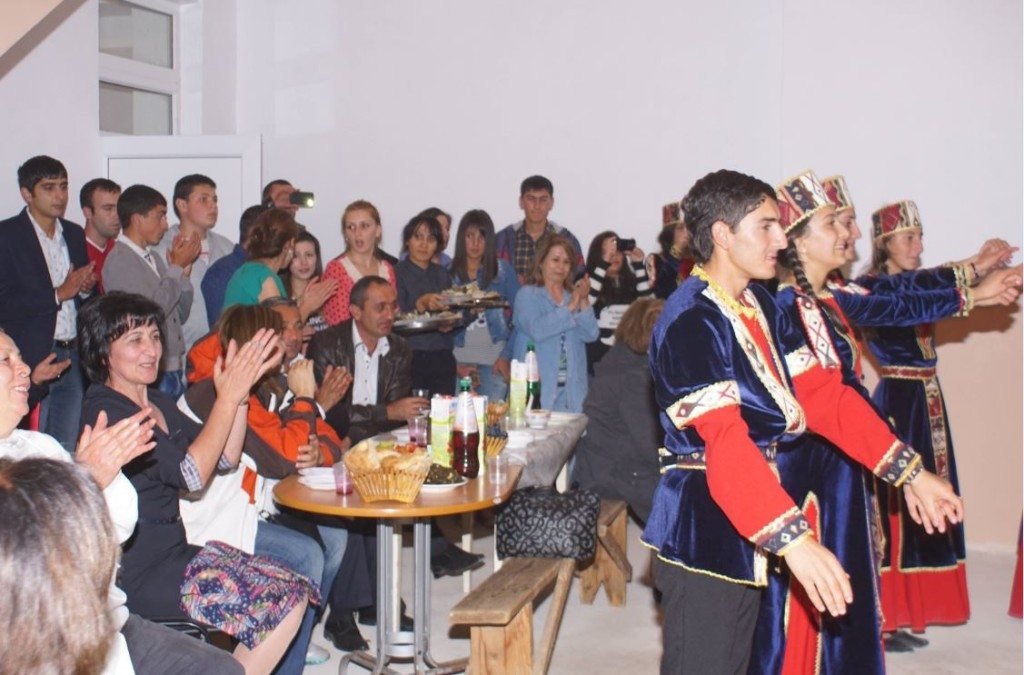
Ardag Kaprielian presented the historical and administrative changes in Javakhk. He was followed by the center’s dance group. Most of them were young ladies, because the boys were too busy helping out in the fields. That was the first of many times that we enjoyed the Javakhk hospitality with home-made specialties. The evening ended with renditions of many Armenian songs, but one young woman sang a special Javakhk song that pierced the hearts of those who paid attention to the lyrics. But you didn’t need to understand the words. You just had to be there, to flow with the music, to see the excitement of those present, to see the other young people join in on the songs, even though they were not in costumes. The word “khrakhjank” for “Armenian party” was an appropriate way to describe it. You could feel how those young people feel about the homeland and their commitment to it.
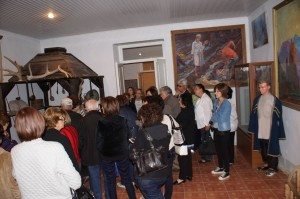
There were too many of us to fit into one hotel. We were divided to four locations. My roommate and I were assigned to the bed & breakfast-type Anank Hotel, made up of a group of houses. We were on the second floor, just above the floor where we had breakfast with everyone who was staying at the facility.
I knew that Javakhk had given birth to many poets and writers, but I didn’t know that even the innkeeper’s wife was a writer. I received the book “Antegh Gragner” (Cinders of Fire) by Vormiztoukhd Garoyan, published in 2013. At the time, I didn’t know that she was so gifted. We had just enjoyed her hospitality at the breakfast table with her smile and the brown-shelled organic eggs.
On the second day, we traveled to Akhaltskha, where we visited the Fortress of Rabat on the way to another youth center in Akhaltskha. This was opened in 2006 and also funded by the ARS of Western USA. Our guide, Tatevosian, explained the plight of the land and fish farmers, who were being crowded out due to projects overtaking their sources of water. She said that it is only possible to understand the psychology and problems faced by the Armenians of Javakhk by seeing these things in person.
In Akhaltskha, we were met by the center’s director, Nanouli Hakopyan, who explained the programs conducted at the center. Back in Akhalkalak, we visited the local museum and the ARS office in Georgia. Kariné Tatevosian presented the activities of the ARS Javakhk Chapter, particularly the assistance to families with more than four children.
On the third day, we stopped by the Holy Cross Church in Akhalkalak before heading to Kantsa, where the home-museum dedicated to poet Vahan Derian is located, along with the third youth center in Ninotsminda. The ARS of Western USA had initiated acquiring the center, with other regions joining in to complete the construction and furnishings, led by the ARS Blue Cross of France, with help from the City of Alfortville (a suburb of Paris). A group of young men and women greeted us with their inspiring and energetic songs.
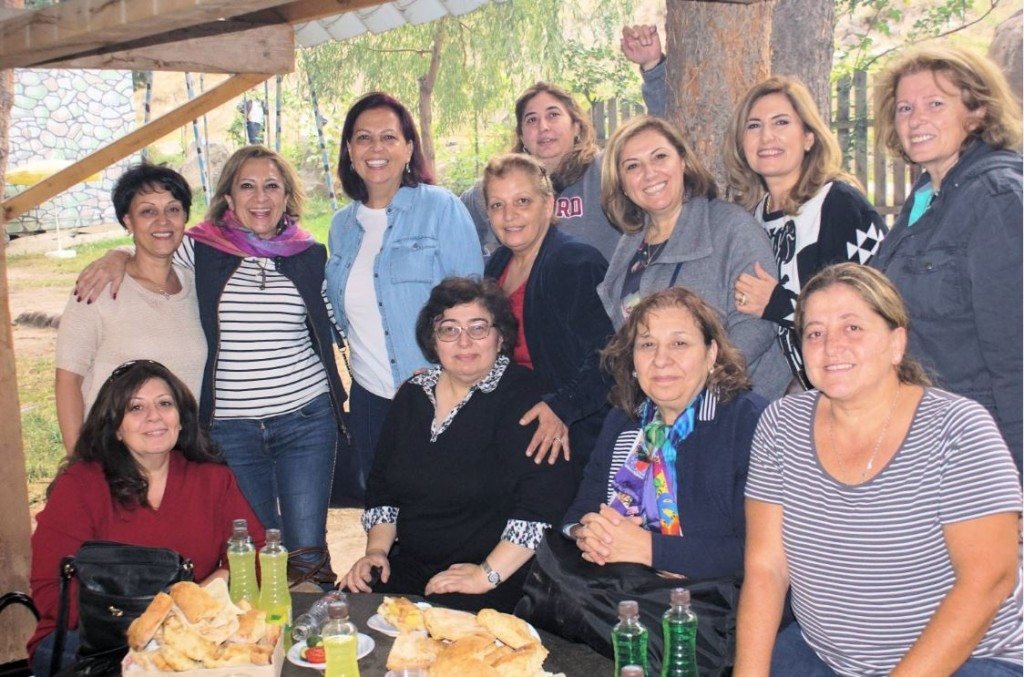
The trip wouldn’t have been complete without a stop at Parvana Lake, which was one of the natural wonders that we visited. One afternoon, lunch was served at a park area, next to a river. We had a lot of time on the bus to view fascinating rock formations, forts, churches, rivers, and a variety of plant life. Even the cats and dogs were interesting to see. But the important things were the unplanned, free-flowing conversations between the cultural tourists and the locals—like at the church cemetery with a bunch of young boys, or with a medical practitioner who opened her door to see who was making so much conversation so early in the morning. And there were those interesting moments where the children wondered how they could understand the Armenian spoken by the tourists…
Seeing Javakhk in person was worth all the sleep deprivation and frigid nights. The vastness of the region, the true deprivation of the people, but their desire to continue to persevere in their homeland was one of the most moving experiences of my recent trip.
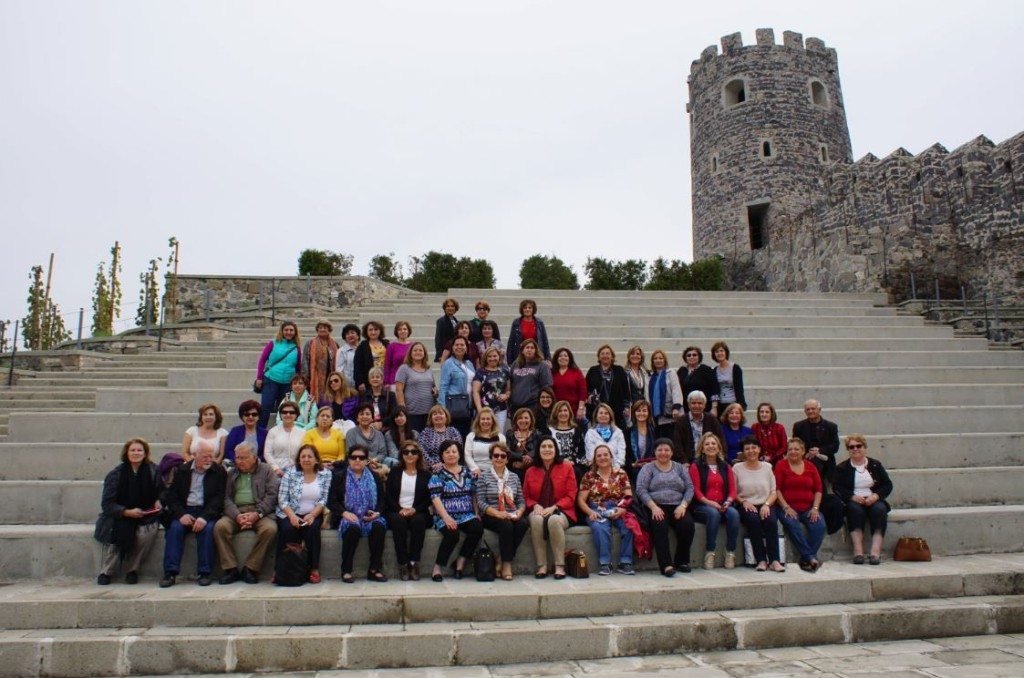



I salute ARS for efforts to rejuvenate the Armenian people of Javakh, while at the same time learning as to what makes the people of Javakh so special.
They as well as the Armenians in Tiflis and the rest of Georgia need to be included in historic Armenia visits. My friend Lucy from San Jose, her niece, and I dared make the trip last April in stormy weather when lake Parvana was inaccessible. And the Kanza church and Teryan museum in snow. Along with the border villages of Hayastan, visits to Artsakh, Tiflis, Javakh need to be on the list of every Armenian who is able to travel. Thank you Rita.